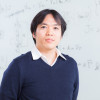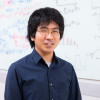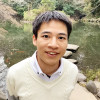Seminar
782 events
-
Seminar

Singular point implies coexistence in adaptive dynamics
September 9 (Wed) at 10:00 - 11:00, 2020
Masashi Tachikawa (Visiting Scientist, RIKEN Interdisciplinary Theoretical and Mathematical Sciences Program (iTHEMS) / Associate Professor, Institute for Frontier Life and Medical Sciences, Kyoto University)
Adaptive dynamics is a relatively new mathematical framework for studying evolution(~1990s). Under the influence of the mathematical ecology and the game theory, adaptive dynamics considers the effect of resident populations on the fitness landscape. As a result, it explains a possible mechanism of evolutionary branching. In this talk, I introduce adaptive dynamics and Pairwise Invasibility Plot (PIP) analysis, a standard method for understanding the adaptive dynamics. Then, I propose a new approach to analyze the adaptive dynamics which enable us to understand higher dimensional systems than PIP does.
Venue: via Zoom
Event Official Language: English
-
Seminar

Maximal Regularity and Partial Differential Equations
September 8 (Tue) at 16:00 - 18:10, 2020
Ken Furukawa (Postdoctoral Researcher, Prediction Science Laboratory, RIKEN Cluster for Pioneering Research (CPR))
The theory of maximal regularity is a powerful tool to get solutions having the best regularity to linear partial differential equations (PDEs) of parabolic type. The theory is also applicable to show well-posedness of various non-linear PDEs. In the first part, We introduce the history of the development of the theory of maximal regularity and the way to apply non-linear PDEs. In the second part, We give some applications to PDEs, e. g. the primitive equations, the Navier-Stokes equations, and elliptic equations with dynamic boundary conditions. *Please contact Keita Mikami's mail address to get access to the Zoom meeting room.
Venue: via Zoom
Event Official Language: English
-
Seminar
Potential Toolkit to Attack Nonperturbative Aspects of QFT -Resurgence and related topics-
September 7 (Mon) - 25 (Fri), 2020
Aleksey Cherman (University of Minnesota, USA)
Gerald Dunne (University of Connecticut, USA)
Mithat Unsal (North Carolina State University, USA)
Toshiaki Fujimori (Keio University)
Yasuyuki Hatsuda (Rikkyo University)
Masazumi Honda (Assistant Professor, Yukawa Institute for Theoretical Physics, Kyoto University)
Okuto Morikawa (Ph.D. Student, Kyushu University)
Naohisa Sueishi (Nagoya University)
Masahito Yamazaki (Kavli Institute for the Physics and Mathematics of the Universe (Kavli IPMU), The University of Tokyo)Recently, there have been significant developments in theoretical techniques/frameworks to tackle non-perturbative aspects of quantum field theory (QFT) such as the resurgence theory, the Lefschetz thimble method, ’t Hooft anomaly matching, and novel lattice setups. Such developments are still growing very rapidly and making fruitful connections not only among physicists involved in fields with broad energy scales but also with mathematicians. These developments would enable us to unveil rich and exciting physics of QFT in the non-perturbative regime. It is of primary importance to hold a workshop for researchers in various fields related to the topics to get together and overview/share the recent progresses, to discuss future directions, and to seek for possible new collaborations bridging various fields of physics/mathematics. For more information, please see on the related link.
Venue: YITP (Kyoto University), Zoom, and Mozilla hubs
Event Official Language: English
-
Seminar

The hitch-hiker’s guide to the concept of adaptive dynamics
September 2 (Wed) at 10:00 - 10:30, 2020
Ryosuke Iritani (Research Scientist, RIKEN Interdisciplinary Theoretical and Mathematical Sciences Program (iTHEMS))
Adaptation is of multi-causality, composed of mutation and selection processes. I will talk about how we model adaptation on the basis of the adaptive dynamics framework. This is a very quick, conceptual talk, rather than heavily mathematical, to draw attention from more people.
Venue: via Zoom
Event Official Language: English
-
Seminar
Geometric Perspective for the Theory of Hydrodynamic Limits
August 31 (Mon) - September 1 (Tue), 2020
Makiko Sasada
Kenichi Bannai (Professor, Faculty of Science and Technology Department of Mathematics, Keio University)This is a series of lectures on "Geometric Perspectives for Fluid Dynamic Limit Theory" by the following speakers: [DAY 1: Aug 31] Dr. Makiko Sasada (University of Tokyo) [DAY 2: Sept 1] Prof. Kenichi Bannai (Keio University) Abstract: One of the fundamental problems in the natural and social sciences is to explain macroscopic phenomena that we can observe from the rules governing the microscopic system giving rise to the phenomena. Hydrodynamic limit provides a rigorous mathematical method to derive the deterministic partial differential equations describing the time evolution of macroscopic parameters, from the stochastic dynamics of a microscopic large scale interacting system. In the article "Topological Structures of Large Scale Interacting Systems via Uniform Locality" joint with Yukio Kametani, we introduce a general framework encompassing a wide variety of interacting systems in order to systematically investigate various microscopic stochastic large scale interacting systems in a unified fashion. In particular, we introduced a new cohomology theory called the uniformly local cohomology to investigate the underlying geometry of the interacting system. Our theory gives a new interpretation of the macroscopic parameters, the role played by the group action on the microscopic system, and the origin of the diffusion matrix associated to the macroscopic deterministic partial differential equation obtained via the space-time scaling limit of the microscopic system. The purpose of the series of lectures is to introduce to the audience the theory of hydrodynamic limits, especially the relation between the macroscopic observables and the microscopic interacting system. We then explain our new perspective of how geometry comes into play in investigating the interacting system, and introduce the ideas and results of our article. *Detailed information about the seminar refer to the email.
Venue: via Zoom
Event Official Language: English
-
Seminar

Modeling biological timing
August 26 (Wed) at 10:00 - 11:00, 2020
Gen Kurosawa (Senior Research Scientist, RIKEN Interdisciplinary Theoretical and Mathematical Sciences Program (iTHEMS))
Under stay-at-home situation, some of you may suffer from sleep disorder. Efficacy of a drug often depends on the timing of its prescription. We know this fact about our "timing", but we don't know why. This time, I wish to introduce two big mysteries in regard to biological timing. First is our internal daily clock. In general, biochemical process is believed to accelerate with temperature. In contrast, the period of our daily clock, made up of biochemical reactions is somehow stable to temperature. The prediction from simpler biochemical mathematical model, and its experimental verification will be presented. Second is hibernation. During winter, some birds and mammals decrease drastically their body temperature possibly to decrease their energy expenditure. Many studies about hibernation have been conducted for many years. However, basic mechanisms of hibernation (e.g. how the duration of hibernation is determined?) are largely unknown. Recently, we started to investigate body temperature time-series of hibernating hamsters over 100 days in the collaboration with experimental biologists. Preliminary results will be presented.
Venue: via Zoom
Event Official Language: English
-
Seminar
Lefschetz-thimble inspired analysis of the Dykhne–Davis–Pechukas method and an application for the Schwinger Mechanism
August 21 (Fri) at 13:00 - 14:30, 2020
Takuya Shimazaki (Researcher, Hadron Theory Group, The University of Tokyo)
Dykhne–Davis–Pechukas (DDP) method is a common approximation scheme for the transition probability in two-level quantum systems, as realized in the Landau–Zener effect, leading to an exponentially damping form comparable to the Schwinger pair production rate. We analyze the foundation of the DDP method using a modern complex technique inspired by the Lefschetz-thimble method. We derive an alternative and more adaptive formula that is useful even when the DDP method is inapplicable. As a benchmark, we study the modified Landau–Zener model and compare results from the DDP and our methods. We then revisit a derivation of the Schwinger Mechanism of particle production under electric fields using the DDP and our methods. We find that the DDP method gets worse for the Sauter type of short-lived electric pulse, while our method is still a reasonable approximation. We also study the Dynamically Assisted Schwinger Mechanism in two methods.
Venue: via Zoom
Event Official Language: English
-
Seminar
Nambu-Goldstone fermion in a Bose-Fermi mixture with an explicitly broken supersymmetry
August 7 (Fri) at 13:00 - 14:30, 2020
Hiroyuki Tajima (Assistant Professor, Department of Natural Science, Kochi University)
Supersymmetry, which is a symmetry associated with interchange between bosons and fermions, is one of the most important symmetries in high-energy physics but its evidence has never been observed yet. Apart from whether supersymmetric partners such as squark exist or not in our world, it is an interesting problem to explore the consequences of the supersymmetry in an ultracold atomic gas. In this study, we address the Nambu-Goldstone mode called Goldstino associated with the spontaneous supersymmetry breaking in a Bose-Fermi mixture. While the explicit supersymmetry breaking is unavoidable even in cold atomic systems, the energy gap in Goldstino spectra can be measured in such atomic systems. By comparing the energy gaps obtained from the Gell-Mann-Oakes-Renner relation and the random phase approximation, we elucidate how the Goldstino acquires the energy gap due to the explicit breakings. We also show effects of Goldstino pole on the fermionic single-particle spectral functions, which can be measured in the recent experiments.
Venue: via Zoom
Event Official Language: English
-
Seminar
Heavy tails in the brain
August 5 (Wed) at 10:00 - 11:00, 2020
Lukasz Kusmierz (Research Scientist, RIKEN Center for Brain Science (CBS))
In my talk I will discuss the relation between two seemingly unrelated measures in the brain that exhibit heavy tails: neuronal avalanches, i.e. bursts of activity with power-law distributions of sizes and lifetimes, and synaptic weights that are believed to be distributed according to the log-normal distribution. Many current models of neuronal avalanches do not rely on heavy-tailed synaptic weight distributions, suggesting that heavy tails of these two quantities may not be related. However, our recent theoretical considerations indicate that this independence no longer holds if two biologically relevant constraints are introduced, i.e., that neurons (1) receive many incoming connections and (2) do not spike if the membrane potential is below some positive threshold, e.g., in the absence of inputs. Under these assumptions we have shown that heavy tails of synaptic weights are necessary to generate biologically plausible low activity levels and associated neuronal avalanches. Our results suggest that the observed distributions of synaptic weights may play important functional roles in the brain.
Venue: via Zoom
Event Official Language: English
-
Seminar
Stability of ferromagnetism in many-electron systems
July 31 (Fri) at 16:00 - 18:10, 2020
Tadahiro Miyao (Associate Professor, Department of Mathematics, Faculty of Science, Hokkaido University)
First part Title: Stability of ferromagnetism in many-electron systems Abstract: I construct a model-independent framework describing stabilities of ferromagnetism in strongly correlated electron systems. Within the new framework, I reinterpret the Marshall-Lieb-Mattis theorem and Lieb’s theorem; in addition, from the new perspective, I prove that Lieb’s theorem still holds true even if the electron-phonon and electron-photon interactions are taken into account. I also examine the NagaokaThouless theorem and its stability. These examples verify the effectiveness of the new viewpoint. Second part Title: Order preserving operator inequalities in many-electron systems Abstract: In this talk, I will introduce order preserving operator inequalities and explain how these inequalities are applied to the mathematical study of ferromagnetism. As examples of applications, Lieb's theorem of the Hubbard model and its stabilities will be discussed in terms of the inequalities.
Venue: via Zoom
Event Official Language: English
-
Seminar

Time-dependent bias emerges in population models with broad offspring number distributions
July 29 (Wed) at 10:00 - 11:00, 2020
Takashi Okada (Senior Research Scientist, RIKEN Interdisciplinary Theoretical and Mathematical Sciences Program (iTHEMS))
It has been increasingly recognized that natural populations exhibit broad offspring number distributions, either because offspring numbers are strongly variable (e.g. marine organisms) or because range expansion processes generate jackpot events. In this talk, I will review the basic concepts of theoretical population genetics and then discuss how broad offspring number distributions affect the evolutionary dynamics.
Venue: via Zoom
Event Official Language: English
-
Seminar
DMWG special seminar : “The result of the XENON1T experiment and its implications”
July 22 (Wed) at 15:30 - 17:00, 2020
Masaki Yamashita (Associate Professor, Cosmic-ray Research Division, Institute for Space–Earth Environmental Research, Nagoya University)
Venue: via Zoom
Event Official Language: Japanese
-
Seminar
Human Time vs. Mouse Time in Embryonic Development
July 17 (Fri) at 16:00 - 17:00, 2020
Miki Ebisuya (Group Leader, European Molecular Biology Laboratory, Barcelona, Spain)
Different species have different tempos of development: larger animals tend to grow more slowly than smaller animals. My group has been trying to understand the molecular basis of this interspecies difference in developmental time, using the segmentation clock as a model system. The segmentation clock is the oscillatory gene expressions that regulate the timing of body segment formation during early embryogenesis. We have recently succeeded in recapitulating the segmentation clock from both human and mouse pluripotent stem cells, detecting oscillations and traveling waves in vitro. Interestingly, the oscillation period of human segmentation clock was 5-6 hours while that of mouse was 2-3 hours. Taking advantage of our in vitro system and simple mathematical models, we have been comparing the genome sequences and molecular processes of the segmentation clock between human and mouse to explain the interspecies difference in the oscillation period.
Venue: via Zoom
Event Official Language: English
-
Seminar
Topological data analysis from a practical and mathematical perspective
July 15 (Wed) at 16:00 - 18:10, 2020
Yuichi Ike (Researcher, Artificial Intelligence, FUJITSU LABORATORIES LTD.)
1. Topological data analysis and its applications In this talk, I will explain some methods in topological data analysis (TDA) and their applications. First I recall persistent homology, which is a central tool to analyze the "shape" of a point cloud set. Then I show several applications to material science and time-series analysis. I also talk about our collaborative research with Inria on noise-robust persistent homology and an automated vectorization method of persistence diagrams. 2. Persistence-like distance on sheaf category and displacement energy In this talk, I will talk about relation among sheaf theory, persistence modules, and symplectic geometry. We introduce a persistence-like distance on Tamarkin sheaf category and prove a stability result with respect to Hamiltonian deformation of sheaves. Based on this result, we propose a new sheaf-theoretic method to give a lower bound of the displacement energy of compact subsets of a cotangent bundle. This is a joint work with Tomohiro Asano.
Venue: via Zoom
Event Official Language: English
-
Seminar
Application of geometry to protein structure analysis
July 15 (Wed) at 14:00 - 15:00, 2020
Haru Negami-Oono (Ph.D. Student, Institute for Biology and Mathematics of Dynamic Cellular Processes, The University of Tokyo)
Geometry is applied in various fields as a method for revealing the structure of data. In this seminar, I will introduce the topological method, fatgraph model, to classify protein structures. I will also introduce another related geometric model and its application to viral glycoprotein analysis. This method provides an a priori prediction of structural rearrangement of proteins.
Venue: via Zoom
Event Official Language: English
-
Seminar
Search for ultralight dark matter with laser interferometric gravitational wave detectors
July 13 (Mon) at 10:00 - 11:00, 2020
Yuta Michimura (Assistant Professor, Department of Physics, Graduate School of Science, The University of Tokyo)
Venue: via Zoom
Event Official Language: English
-
Seminar
Complex Langevin study of an attractively interacting two-component Fermi gas in 1D with population imbalance
July 10 (Fri) at 13:30 - 14:30, 2020
Shoichiro Tsutsui (Special Postdoctoral Researcher, Quantum Hadron Physics Laboratory, RIKEN Nishina Center for Accelerator-Based Science (RNC))
We investigate an attractively interacting two-component Fermi gas in 1D described by the Gaudin-Yang model with population imbalance. While the Gaudin-Yang model is known as a solvable model based on the thermodynamic Bethe ansatz, the binding energy and mass of poralon at finite temperature and moderate impurity density are still unknown. Moreover, in such a system, quantum Monte Carlo simulation suffers from the sign problem because the population imbalance makes the fermion determinant non-positive definite. In this study, we apply complex Langevin method, a holomorphic extension of the stochastic quantization to overcome the sign problem. We first confirm our numerical results satisfy a criteria for correct convergence [1], and present how the polaron energy depends on temperature and density of impurity. We also compare our results with a recent study based on a diagrammatic approach [2].
Venue: via Zoom
Event Official Language: English
-
Seminar
Constrained evolution of animal embryogenesis
July 8 (Wed) at 10:00 - 11:00, 2020
Yui Uchida (Special Postdoctoral Researcher, Laboratory for Multiscale Biosystem Dynamics, RIKEN Center for Biosystems Dynamics Research (BDR))
Animals have developed a great variety of morphologies during the course of evolution. Despite this, phylogeny-specific features have sometimes been maintained for hundreds of millions of years, suggesting that there are constraints to morphological evolution. In my talk, I will introduce some of general motivations behind the EvoDevo study and talk particularly about the blank space in morphospaces (Each axis of a morphospace corresponds to a variable describing morphological features). It remains to be seen if these blank areas are caused by impossible developmental pathways. However, computer simulations of embryogenesis, which has been proposed in recent years, may provide a clue to a solution. Finally, I’m going to talk about my research plan based on this.
Venue: via Zoom
Event Official Language: English
-
Seminar

Waveform Analysis of Biological Rhythms
July 1 (Wed) at 10:00 - 11:00, 2020
Shingo Gibo (Postdoctoral Researcher, RIKEN Interdisciplinary Theoretical and Mathematical Sciences Program (iTHEMS))
Nonlinear oscillatory phenomena often emerge in various systems, for example circadian rhythms in biological systems and acoustic vibrations in engineering. Analysis and control of these oscillatory phenomena are one of the big problems in science and technology. My main research field is biological oscillations, especially circadian clocks. The circadian clocks are based on gene-activity rhythms with approximately 24-hour period, and its temporal waveforms are of various shapes. Recently, we theoretically showed that the period of circadian clocks is proportional to the waveform distortion from sinusoidal waves. Interestingly, we found the waveform is important for periods not only in biological oscillations but also in several other types of nonlinear oscillator models.
Venue: via Zoom
Event Official Language: English
-
Seminar

Universal Error Bound for Constrained Quantum Dynamics
June 24 (Wed) at 16:00 - 18:10, 2020
Ryusuke Hamazaki (Senior Research Scientist, RIKEN Interdisciplinary Theoretical and Mathematical Sciences Program (iTHEMS) / RIKEN Hakubi Team Leader, Nonequilibrium Quantum Statistical Mechanics RIKEN Hakubi Research Team, RIKEN Cluster for Pioneering Research (CPR))
In quantum mechanics, the existence of large energy gaps allows us to trace out the degrees of freedom of irrelevant energy scale. Consequently, we can treat a system within a constrained subspace obtained by the projection of the total Hilbert space. While this statement has widely been used to approximate quantum dynamics in various contexts, a general and quantitative justification stays lacking. In this talk, we show a universal and rigorous error bound for such a constrained-dynamics approximation in generic gapped quantum systems [1,2]. This universal bound is a linear function of time that only involves the energy gap and coupling strength, provided that the latter is much smaller than the former. If time allows, I will briefly talk about generalizations of our result to e.g., quantum many-body systems and open quantum systems.
Venue: via Zoom
Event Official Language: English
782 events
Events
Categories
series
- iTHEMS Colloquium
- MACS Colloquium
- iTHEMS Seminar
- iTHEMS Math Seminar
- DMWG Seminar
- iTHEMS Biology Seminar
- iTHEMS Theoretical Physics Seminar
- Information Theory Seminar
- Quantum Matter Seminar
- ABBL-iTHEMS Joint Astro Seminar
- Math-Phys Seminar
- Quantum Gravity Gatherings
- RIKEN Quantum Seminar
- Quantum Computation SG Seminar
- Asymptotics in Astrophysics Seminar
- NEW WG Seminar
- GW-EOS WG Seminar
- DEEP-IN Seminar
- ComSHeL Seminar
- Lab-Theory Standing Talks
- QFT-core Seminar
- Quantum Foundation Seminar
- STAMP Seminar
- QuCoIn Seminar
- Academic-Industrial Innovation Lecture
- Number Theory Seminar
- Berkeley-iTHEMS Seminar
- iTHEMS-RNC Meson Science Lab. Joint Seminar
- RIKEN Quantum Lecture
- Theory of Operator Algebras
- iTHEMS Intensive Course-Evolution of Cooperation
- Introduction to Public-Key Cryptography
- Knot Theory
- iTHES Theoretical Science Colloquium
- SUURI-COOL Seminar
- iTHES Seminar
